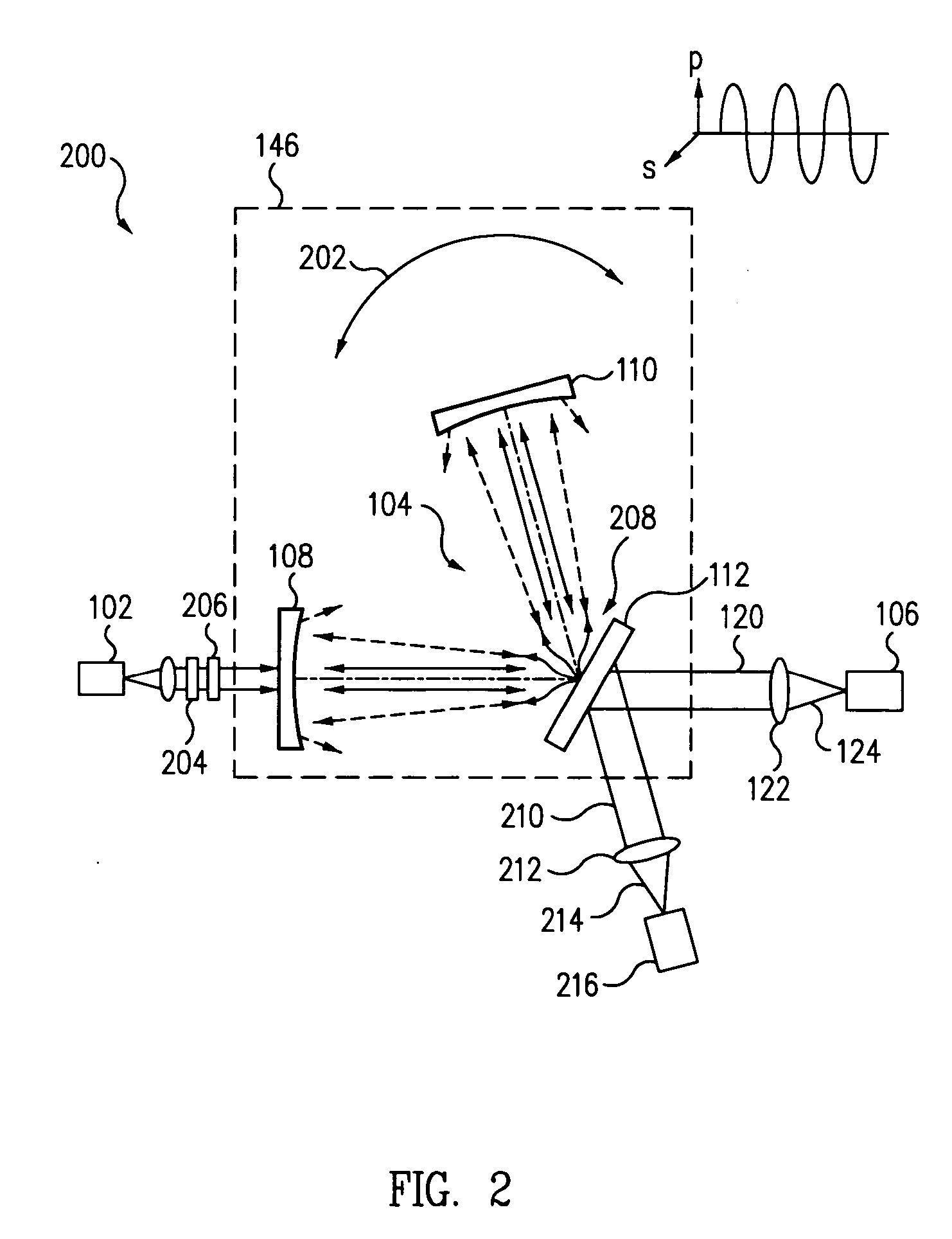Light scatter measurement apparatus and method
a light scatter measurement and light scatter technology, applied in the field of optical characterization, can solve the problems of progressive diffusion of the circulating beam about the path, measurement errors inherent in this technique, and less accurate conventional light intensity based measurements
- Summary
- Abstract
- Description
- Claims
- Application Information
AI Technical Summary
Benefits of technology
Problems solved by technology
Method used
Image
Examples
Embodiment Construction
[0025] In reference to FIG. 1, an optical scatter measurement system 100 includes a light source 102, a passive optical cavity 104, and a detector 106. Light source 102 provides a light beam to excite the cavity 104. In this embodiment, the cavity 104 includes a first end mirror 108, a second end mirror 110, and a test piece 112 configured to form an L-shaped arrangement where the end mirrors form the legs of cavity 104 and are located symmetrically about the test piece.
[0026] In this embodiment, the legs are spaced at 90-degrees so that test piece 112 is located at about 45-degrees having a normal that bisects the angular distance between the two legs of cavity 104. End mirrors (108, 110) each have a planar surface and a highly reflective concave surface. The test piece 112 has a reflective planar surface facing the cavity and can be set at a 45-degree angle to form the L-shaped cavity 104 where the concave surface of the first end mirror 108 is oriented towards the planar surface...
PUM
| Property | Measurement | Unit |
|---|---|---|
| round trip time | aaaaa | aaaaa |
| diameters | aaaaa | aaaaa |
| diameters | aaaaa | aaaaa |
Abstract
Description
Claims
Application Information
 Login to View More
Login to View More - R&D
- Intellectual Property
- Life Sciences
- Materials
- Tech Scout
- Unparalleled Data Quality
- Higher Quality Content
- 60% Fewer Hallucinations
Browse by: Latest US Patents, China's latest patents, Technical Efficacy Thesaurus, Application Domain, Technology Topic, Popular Technical Reports.
© 2025 PatSnap. All rights reserved.Legal|Privacy policy|Modern Slavery Act Transparency Statement|Sitemap|About US| Contact US: help@patsnap.com



